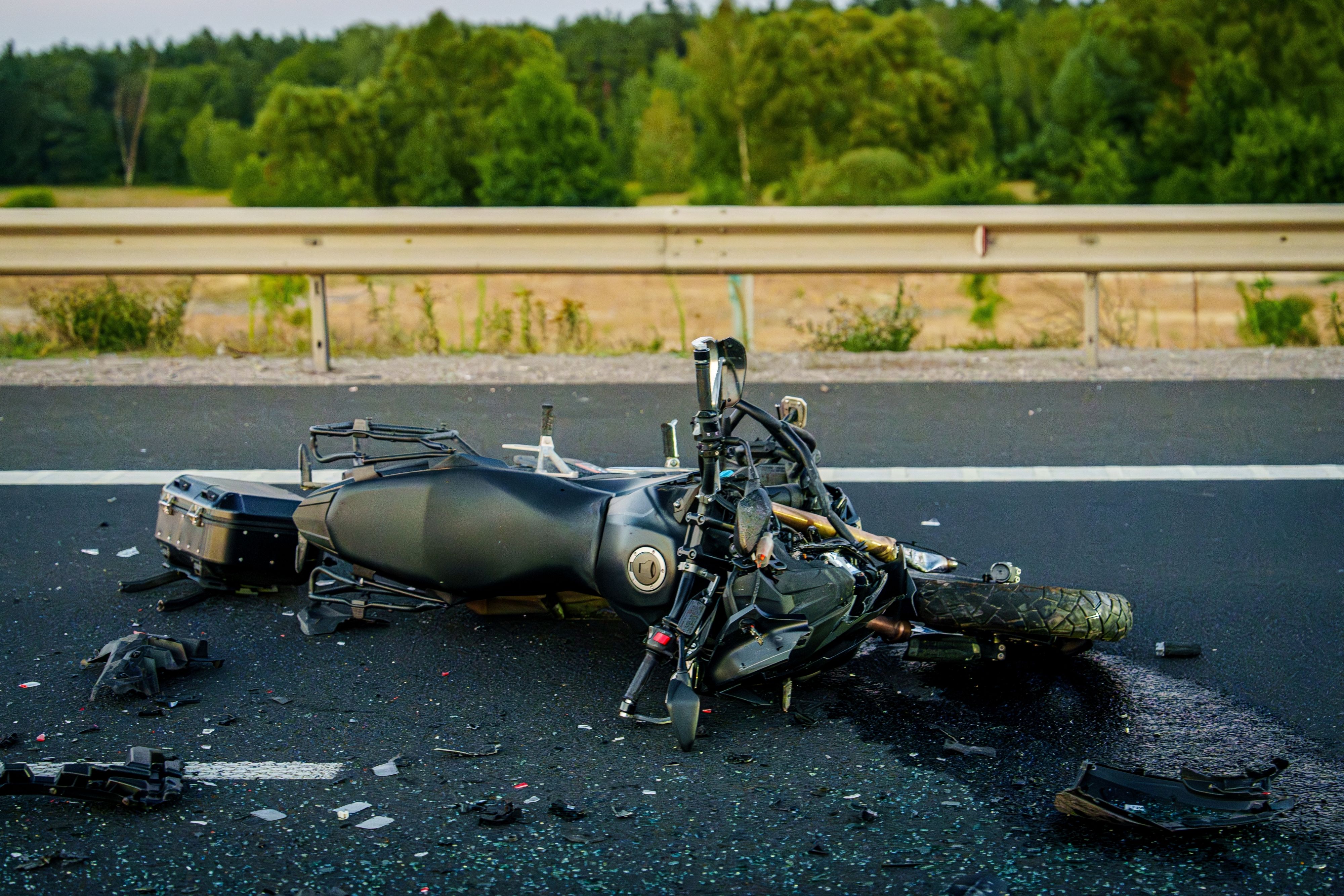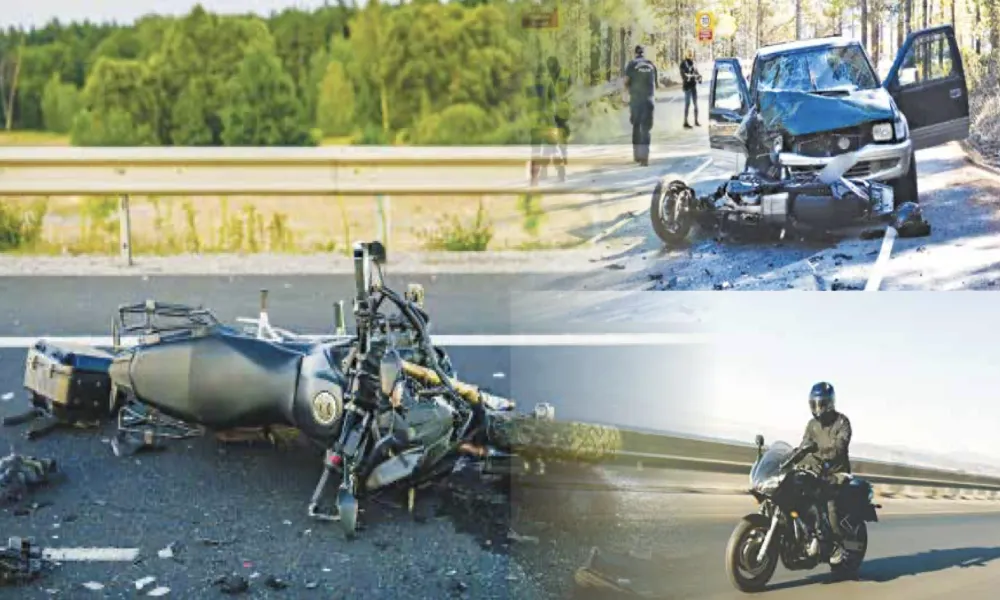It’s not just speed that kills motorcyclists. It’s roads that weren’t designed for them, drivers who fail to see them often because of the very speed their bikes can reach, and a state that continues to fail them by not taking the measures needed to build a genuine culture of road safety. The data on motorcycle deaths in Cyprus are revealing.
According to the latest figures from the Statistical Service, there are 844,642 registered vehicles in Cyprus. Of these, just 34,411 are motorcycles - less than 4% of the total. Yet of the 37 fatal collisions recorded nationwide by the end of October 2025, almost 38% - specifically 14 - involved motorcyclists. Three of those victims were not wearing helmets, according to official data.
The most recent fatality was that of 45-year-old Petros Voutis, a father of two who was killed instantly when his motorcycle collided with a pickup truck on the Karvounas–Troodos road on the morning of 28 October. The autopsy revealed severe head trauma and multiple bodily injuries. Although Voutis was wearing a helmet, authorities are investigating whether it had been properly fastened. The crash was so violent that his life ended within seconds.
A few months ago, the author of this piece had a close call himself - losing control of his bike after hitting a slick of oil spilled from a truck. He escaped with a few grazes and a torn pair of jeans. Others haven’t been as lucky. So who’s to blame? Speed? The driver? Or an entire system that has left them exposed?
Visibility
“Because of a motorcycle’s small size, it often isn’t visible in the distance. That makes it more vulnerable - and its design doesn’t forgive mistakes,” explains Marios Constantinides, president of the Cyprus Motorcyclists’ Rights Club.
The small profile of a bike means it can easily disappear in a driver’s field of vision or behind parked cars. When a driver pulls out from a side road thinking they have enough time, the result can be fatal. “If your view isn’t clear, the likelihood of an accident multiplies,” Constantinides says.
The second issue, he stresses, is infrastructure. Cyprus’s road network was not designed with two-wheelers in mind. “Heavy traffic, on-street parking - all of this limits reaction time,” he says. Worn-out tarmac and faded markings create an environment that “forgives” a car driver’s mistake, but not a motorcyclist’s. “A minor error in a car might mean a dented bumper. For a rider, it can mean their life.”

Inadequate training
The situation is compounded by an outdated and insufficient training system. “We’re not in favour of more hours or kilometres - we’re in favour of quality training,” says Constantinides. In Cyprus, obtaining a motorcycle licence can take up to nine months, yet the training remains largely standardised and theoretical. “You need to learn how to avoid danger, not just how to balance and weave between cones.”
The Club is calling for a complete overhaul: upgraded driving schools, mandatory modules on sharing the road with motorcyclists for car licence applicants, and road safety education from primary school onwards. “If you don’t learn respect on the road as a child, you’ll never have it,” Constantinides says, stressing that the problem is one of culture as much as policy.
'Death traps'
Driving mentality, he continues, is the third key factor. “It’s a matter of general culture. People say bikes are ‘death traps’. But it’s the rush, the aggression, the phone use, and the lack of patience from both drivers and riders, that make the roads dangerous. We need to build a culture of mutual respect from a young age.”
Asked about the police, he adds: “They can’t be everywhere. The responsibility lies with all of us.”
Particular concern surrounds food and parcel delivery riders, many of whom are on the road daily with minimal training and only learner’s permits. Companies treat them as “partners” rather than employees, so they are not required to provide training. The result is hundreds of riders on the streets without proper preparation - often overtaking on the left, ignoring pedestrian crossings, or weaving between cars, endangering themselves and others.
From next year, new regulations will allow learner riders to drive only under instructor supervision during lessons or tests - a positive step. However, the problem is shifting elsewhere, the Club warns: to e-bikes and electric scooters, where thousands of riders operate without a licence, insurance, or sufficient training. Long waiting times for motorcycle test slots - now exceeding eight months - are also pushing many towards these alternatives.
Adrenaline rush on the road
Many young riders seek their adrenaline on public roads, often with tragic results. The absence of organised training or practice spaces leaves them to “let off steam” on the street. “We need multipurpose tracks for training and track days. If you have nowhere to learn, the road becomes your racetrack,” says Constantinides, who has long advocated for such facilities in every district. “But the state just waits. For what, we don’t know.”
“There is a good track - in Achna,” says Stelios Kythreotis, road safety expert, racing driver, and manager of Cyprus’s only licensed circuit. “The problem is not infrastructure - it’s mentality. There’s no systematic education and no incentive for riders to use the track.”
Abroad, he notes, young riders are trained on circuits under real risk scenarios - avoiding obstacles, braking on wet roads, recognising hazards. “Not just memorising road signs and taking a ten-minute ride,” he says.
Education, Kythreotis stresses, is for all road users. “If you analyse fatal crashes, speed is rarely the main cause. Most deaths come from negligence, carelessness, failure to give way, or limited visibility. Speed is third or fourth on the list.”
“I’m not against the photo-enforcement system - but it doesn’t work as it should,” Kythreotis adds. “All those millions should go where they’re needed - into infrastructure, into barriers that don’t kill riders, and into education.”

'Rally drivers are the careful ones'
“I get angry when people say ‘he was driving like a rally driver’. Rally drivers are actually the best drivers on the road, because they’ve had their fill. People who truly love speed don’t need to prove anything; they race only on the track and drive calmly outside it.”
Developing motorsport, he argues, isn’t part of the problem - it’s part of the solution. The reason plans for new tracks have stalled for years is the lengthy licensing process. “It takes at least five years to get a new circuit operational. Until then, the state should support the one we have - with training programmes, school visits, and awareness events for young drivers and delivery riders.”
A track, he stresses, is not a luxury but a prevention tool. “Young riders enter confident, do two laps, realise how much they don’t know, learn, and stop taking risks on the road.”
Equipment and infrastructure
One of his proposals is to make airbag suits mandatory for motorcycles above a certain engine size. “Just as helmets are compulsory, so should airbag suits be.” He also points to the danger of crash barriers with exposed supports: “They save cars but kill riders. The solution is known - adding a lower metal plate so that the rider slides instead of being cut.”
As for fatal crashes, he notes that most involve old and poorly maintained vehicles. His recommendation: introduce car scrappage schemes for vehicles over 15 years old, with extra incentives for purchasing safer new models.
